Performance-Minded Leadership
The Appleton Greene Corporate Training Program (CTP) for Performance-Minded Leadership is provided by Mrs. Sherwood Certified Learning Provider (CLP). Program Specifications: Monthly cost USD$2,500.00; Monthly Workshops 6 hours; Monthly Support 4 hours; Program Duration 18 months; Program orders subject to ongoing availability.

Personal Profile
Mrs. Sherwood is passionate about empowering people and organizations to achieve extraordinary results. For over 20 years she has served in and partnered with a diverse array of organizations including financial services, insurance, healthcare, information technology, government (Federal, state, and local), higher education, energy, medical device, and manufacturing.
Mrs. Sherwood specializes in designing, launching, growing, and maturing continuous improvement and organizational effectiveness initiatives. She began her career in a leadership development program in the financial services business unit of one of the largest multinational corporations. After establishing a solid foundation in continuous improvement and leadership abilities, she transitioned to consulting with Fortune 500 companies, large Federal government organizations, and other industries to design, build, and expand their continuous improvement capabilities. Over the past 10 years Mrs. Sherwood has operated her own consulting practice and continues to serve large and medium size organizations to ignite transformation through workshops, advisory services, and content solutions.
Mrs. Sherwood’s core services include Lean Six Sigma deployment strategy and execution, development and delivery of Lean Six Sigma training programs (all levels), leadership development and coaching, performance metric development, reporting, and monitoring, project and team facilitation and coaching, and risk management deployment planning and execution. She is certified as a Lean Six Sigma Master Black Belt and John Maxwell Team Leadership Coach, Trainer, and Speaker. She also serves as a senior fellow and faculty member at multiple leading universities. Through her various experiences, Mrs. Sherwood partners with clients to defy established thinking and practices to spur positive change.
To request further information about Mrs. Sherwood through Appleton Greene, please Click Here.
Introduction
A Wave of Change and Complexity
COVID-19 brought a wave of change to the world unprecedented since The Great Depression where people’s lives, schooling, business, and society as a whole came to halt. Remote work and school, flexible access to health care providers using telehealth options, supply chain disruptions, and changing customer needs are just a few of the changes experienced. While some of these were introduced abruptly, and others more slowly, the ripple will continue. More recently, return-to-work/hybrid work, employment shortages, and inflation continue to present challenges to organizations and their leaders. Organizations, large and small, public, and private, need to be adaptive to ensure their sustainability. Building and growing a culture of continuous improvement is essential for organizations to be resilient, adaptable, and to create problem solving capabilities.
Complexity has become a norm – such as diverse and interconnected technology platforms, complicated supply chains, multi-faceted customer engagement touchpoints, and complex processes and organizational structures. Understanding the function of a system which consists of numerous diverse interrelated parts makes organizations complex. Complexity has important advantages over its more evident drawbacks, particularly when in dynamic and uncertain environments such as now. A system is more resilient when it has a variety of components or is more complex. An organization that relies on a small number of technologies, goods, and procedures—or that employs personnel with similar backgrounds and viewpoints—does not have many options for responding to unforeseen possibilities and risks, and therefore has limited opportunity for success.
As organizations grow and complexity increases, leaders become less aware of how everything is interconnected. Often, unnecessary complexity is introduced because of this, making it more difficult for leaders and their people to effectively execute their functions. It is critical for leaders to be equipped with the knowledge, skills, and tools to understand and combat complexity within their organizations in order to identify and eliminate obsolete or overly complicated processes. A culture of continuous improvement enables the organization and its leaders to optimize existing operations, as well as develop new offerings without continually raising the overall level of complexity. It is also credited with speeding up and raising the degree of innovation in general. The truth is that complexity is more important for viability and competitiveness in today’s dynamic, unpredictable business environment. A leader who focuses on resilience, adaptability, coordination, and reliability is better prepared to undertake complexity within their organization.
The Case for Continuous Improvement
A continuous improvement culture has, and remains, a great advantage for organizations across all industries. Simply, continuous improvement is the ongoing improvement or products, services, and processes through incremental improvements (over time) or breakthrough improvements (at once). Organizations who have undergone continuous improvement transformation have seen an increase in operating performance as well as a decrease in employee absences. The primary aim in continuous improvement is employee empowerment aimed at efficiency and growth through product/service innovation, with the advantageous side effect being cost reduction. Continuous improvement is not implemented as a single decision, by a single leader, or in a short timeframe, but is a long-term journey and requires several factors for success, such as:
Vision and Platform
• A clear vision and expectations for how and why continuous improvement strengthens the organization, and why it’s needed in the short-, mid-, and long-term.
Engaged Leadership
• Engaged leaders are vital to help guide continuous improvement efforts. They take ownership and spearhead the efforts, communicate the vision, and get others excited. Leaders set the pace for continuous improvement.
Allocated Resources
• Continuous improvement doesn’t happen by itself, it requires devoted personnel, financial, and other resources. Each organization’s resource needs should be suited to its unique vision, goals, and culture.
Structured Methods
• Excellence is not produced by ad hoc methods but needs intentional critical thinking and problem-solving methods. Continuous improvement requires an organization to commit to the use of structured problem-solving methods that enable people to break large/complex problems into constituent parts and make incremental or breakthrough improvements.
Supporting Infrastructure
• Critical infrastructure elements include project selection criteria and practices, standard tools and templates, project management methods and support, certification standards and processes, and more.
For an organization to remain sustainable, it must continually adapt. Organizations must build a culture of continual improvement to become robust, flexible, and capable of continually solving problems and addressing complexity. We must learn to change and adapt if we want to survive in an uncertain future. Starting your lean journey will help you build an agile and resilient organization that will better prepare you for the future.
If organizations do not systematically focus on improving the way they operate and do business, they will gradually lose ground to competitors until they become obsolete. Take Blockbuster for example who became obsolete, while Netflix thrived due to a lack of customer focus and value, rigidity in business model, and lack of innovation. Blockbuster began as the video renting hub, where movie consumers could bring home the experience of the theater. Blockbuster was different from other video rental stores since it gave customers access to thousands of VHS tapes using its contemporary, computerized check-out method. Netflix was founded and made successful due to its focus on customer needs, and willingness to adapt and innovate – all aspects of an improvement-minded culture. Netflix improved upon Blockbuster’s business model by providing customers with subscriptions rather than charging per movie rental, eliminating the need for bothersome late penalties. It continued to improve its business model as it eliminated the need for physical DVDs in general and moved entirely to an ecommerce business and is now the top streaming service in the U.S.
Yet, if continuous improvement is embraced and applied to all aspects of an organization, improvement will happen a little bit every day, or at least every week. What makes this particularly impactful is that the outcomes compound.
Therefore, if it is sustained for a long enough amount of time, and theoretically never ends, the difference will be tremendous. Competitors will find it extremely tough to catch up, products and services will be on the leading edge, talent will be retained, and the culture will be adaptable and resilient to continued change and complexity.
Advantages of Continuous Improvement
Some of the more common advantages for organizations to adopt continuous improvement include:
• Savings on expenses
• Less waste (time, resources, money)
• Enhanced operational effectiveness
• Reduced capital requirements and inventory levels
• Improved customer satisfaction and engagement
• Better knowledge exchange and organizational learning
• Improved product/service quality
• Reduced feedback loop and time to value creation
• Increased employee engagement and culture
Several of these benefits contribute significantly to an organization’s bottom line, and most leaders are aware that continuous improvement drives these results. However, when done correctly and with the right infrastructure in place, continual improvement is far more vital for your organization’s long-term performance and value creation than pure cost and efficiency improvements.
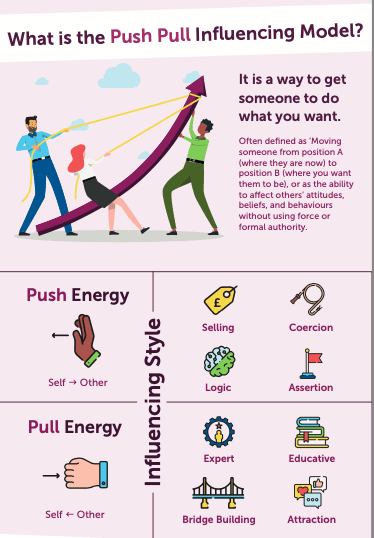
Leadership Response
As organizations are continually faced with rapid change and complexity, its leaders need to be equipped with the proper skill set to guide the business towards success. Some of these vital skills include:
• Establishing a Vision
o The leadership vision is the capacity to focus on the most crucial elements of oneself or one’s business, such as what one wants to accomplish and the kind of leader one aspires to be. Your vision might include the knowledge from your past, pressing issues in the present, and goals for the future.
• Getting Others to Follow
o As a leader your best practice is to lead by example. Be the most prepared and have the highest standards. Setting the example will help motivate your team to follow. Getting others to follow you first requires them to trust you. This requires both emotional intelligence and trust which can be built by leading authentically and transparently through your actions.
• Developing Others
o Coaching is a relational activity that aids and supports people as they develop their skills and learn, resulting in improved performance and desirable outcomes that are in line with predefined objectives and goals. Leaders who effectively coach their staff, either individually or in teams, report positive outcomes. Coaching can take more time than other ways of teaching, growing, or helping your workers deal with stress and change in the near term, but it pays off in the long run. It is considered as one of the top strategies for enhancing employee performance.
• Managing performance
o Performance management is a continuous process in which you as a leader work with your team o collaborate, plan, and evaluate everyone’s job outcomes, future objectives, and development needs. Clear expectations are set, performance is monitored, and feedback is given by leaders. Individual results support team objectives and corporate objectives.
• Communication
o Strong communication skills help those in a leadership position because they are responsible for inspiring and motivating those around them. Without such skills, a leader would not be listened to or respected by others. Communication skills help leaders clearly define the goals of team members. It also helps understand team members’ roles, it also aids in resolving disputes, and problem solving. An open and positive relationship between leaders and their teams is fostered by effective communication skills, and this improves output and efficiency.
• Decision-making
o Not everyone is born with the capacity for decision making. Sometimes this skill must be developed, and leadership coaching is an excellent method for doing so. The ideal coach will push you, encourage new ideas, motivate you to learn new abilities, and support long-lasting behavioral changes.
Regardless of the level your role is in an organization, next-level leadership must continually be developed. The Performance-Minded Leadership program builds the critical capabilities needed in our future leaders.
Executive summary
Performance-Minded Leadership
Whether in public or private, profit or not-for-profit environments, as organizations we exist to serve our customers. A Lean organization focuses on its customers first by understanding how they define value and assessing its key processes to continuously increase the value being provided (while relentlessly eliminating waste). Constant dialogue with customers is needed to understand how their needs have changed, which creates a ‘north star’ for what to focus on. When people have a clear sense of the organization’s purpose (via mission, vision, and goals) and how they fit into that purpose and provide value to others, they are more engaged and committed.
An organization’s products and services are delivered to its customers via the execution of processes that link together functions. In many cases, customers identify with and judge an organization based on how key processes are executed in relation to customers’ needs. Based on the functional design in organizations, people and teams get a limited view of how their work connects to value-driving activities and are unclear what happens before and after their engagement in the process, which leads to inefficiencies, increased complexity, and miscommunication between functional groups. When an organization and its people think of itself as a larger system of interconnected processes, it enables increase teamwork, communication, collaboration, and ultimately improves the delivery of products and services to customers.
In order to remain resilient, adaptable, and meet the needs of customers, organizations need to build problem-solving capabilities. A critical aspect of problem solving is to apply a systematic approach that is repeatable and logical. A3 thinking provides leaders with an effective problem-solving methodology. It connects the problem, its root causes, goals, actions to achieve the goal, and the results in a natural and logical sequence. A3 thinking enables a consistent approach to be applied to a broad array of organizational problems. It also serves as a key tactic in storytelling, which is important for garnering support from leaders, key stakeholders, and to motivate others.
Whether you are a people-leader with positional authority, or are driving change and improvement in your organization, influence is a critical attribute to possess and hone to grow as leaders. The ability to influence others is fundamental to getting others to follow, gaining support from others, motivating others towards a common goal, and much more. The essence of influence comes from adding value to others, not having formal authority. influence is a powerful tool both inside and outside of any organization. Learn to use it effectively to carry out tasks and achieve goals successfully. Mastering the art of influence is a powerful way of ensuring one’s own success.
Leadership and managers are continuously working towards optimizing the responsiveness, throughput, quality, cost, and efficiency of it production and service systems. To do so, key performance indicators (KPIs) need to be defined for core processes and systems, data on those KPIs needs to be collected accurately, and monitoring of the KPIs needs to occur with clear thresholds and accountabilities defined for performance. With robust performance management practices, leaders and managers can obtain advance notice when their organizations are likely to miss critical performance targets. This helps move from a firefighting culture to a problem-solving and problem preventative culture of learning.
Organizations are a larger system of interconnected processes. Due to their organization in functional structures, people and teams have a limited view of how their work connects to other functions, which leads to inefficiencies, increased complexity, and miscommunication. Process mapping captures process knowledge in a visual format. They facilitate easy communication, aide in understanding how processes truly work, identify waste and areas for improvement, and serve as a guide for effective execution of core business processes.
Countless organizations include the com¬mon adage “people are our greatest asset.” However, many times development and im¬provement of one’s skills are only linked to training, which is a partial solution. Coaching is critical in the ongoing enhance¬ment of people’s skills, their potential, and, ultimately, the performance of the organi¬zation. Coaching is unlocking people’s potential to maximize their own performance. Coaching guides people to their full potential and prepares them for success – leading to high performance. In the blog post “Benefits of Coaching Employees to Improve Business Performance,” the website Intellect states that coaching is essential to businesses during times of uncertainty and economic turmoil, helping organizations better manage change. Growing coaching skills across an organization can boost success and help navigate change and uncertainty.
Data is being collected around us at a faster pace than ever before and will continue to increase in the future. The use of data to understand organizational performance is not new, however organizations struggle to understand how to use the data that is collected, or whether the data being collected is relevant. Leaders and managers often use outdated data or lagging metrics which do not allow for an effective understanding of problems and opportunities. Much of the data collected in organizations is driven by technology systems and their capabilities, versus taking a customer and process focused view of what is important to measure and monitor. Data collection is a process that begins with clarifying data collection goals, includes validating data collection methods, and incorporates the continued improvement of measurement consistency. Applying a structured data collection process safeguards from the risk of using incorrect, outdated, and irrelevant data leading to flawed decision making.
We live in a world of data, which gets used in countless ways. The way organizations manage and derive insight from it is changing the way the world uses business information. Tracking purchasing and spending habits, determining what medications are most effective, identifying which piece of equipment in a manufacturing facility is not running correctly, and who are higher risk for insuring are all examples of how data are used. Fundamental to the use of data to drive decisions is the ability to analyze and interpret it to make correct and effective decisions. It is important to understand what graphical and statistical analysis techniques are best suited to different types of data. It’s also important to determine the purpose of and audience for the data to convey relevant and timely conclusions and insights.
Root Cause Analysis
There is no shortage of problems that arise in our organizations. Whether they are related to how we engage with and serve our customers, how we utilize and manage our resources, or how we grow and adapt over time, problems are continual. To effectively address the myriad of problems, organizations need to establish good problem-solving capabilities. A key component of effective problem-solving is root cause analysis, which uncovers the root causes of problems. The traditional approach to problem-solving often addresses symptoms, which leads to reactionary and firefighting tactics. Root cause analysis approaches, tools, and techniques discover the underlying causes of problems to identify appropriate and sustainable solutions. Root cause analysis provides a structured way to modify processes and system issues to prevent future problems.
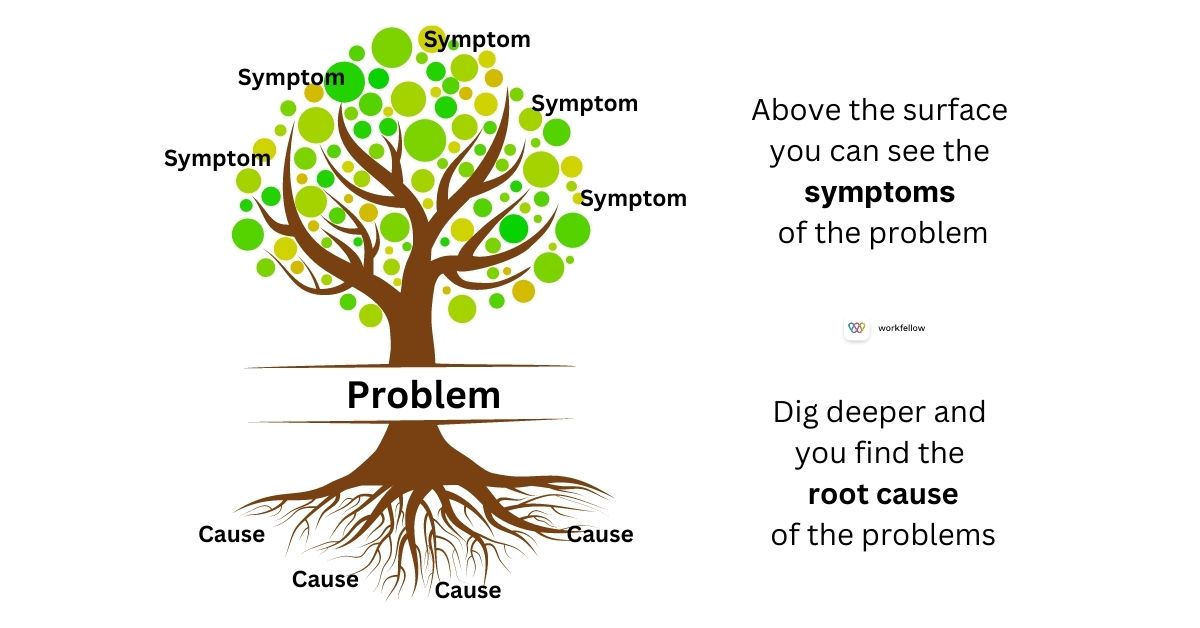
70% of change efforts fail to achieve their targeted impact (Source: Scott Keller and Colin Price, Beyond Performance: How Great Organizations Build Ultimate Competitive Advantage. 2011).
To be a change agent, storytelling is an important skill to garner support from leaders, key stakeholders, and to motivate others. Effective storytelling requires the ability to tell a story succinctly and visually to an audience for the purpose of information sharing, knowledge transfer, or decision-making in a creative and engaging manner. Storytelling requires striking the right balance between telling a story and presenting the data.
When data and stories are used together, they resonate with audiences both intellectually and emotionally for a lasting effect, you need to persuade the rational brain but also resonate with the emotional brain.” — Psychologist Jennifer Aaker
Many organizations have already integrated the concepts of continuous improvement and have seen success. Some of these companies include the large and highly successful multinational technology company Google. Employees at Google, which is renowned for its playful and creative work environment, believe that they are engaged in continuous improvement “at breakneck speed.” Google uses the continuous improvement tools and processes for driving internal process and accelerating rapid product innovation. Objectives and Key Results, or OKRs, are the foundation of Google’s Continuous Improvement approach and aid in uniting the company under a shared vision and performance indicators. With the use of this approach, each employee is required to commit to a set of measurable improvement goals that further the organization’s overarching goal of “organizing the world’s knowledge and making it widely accessible and valuable.”
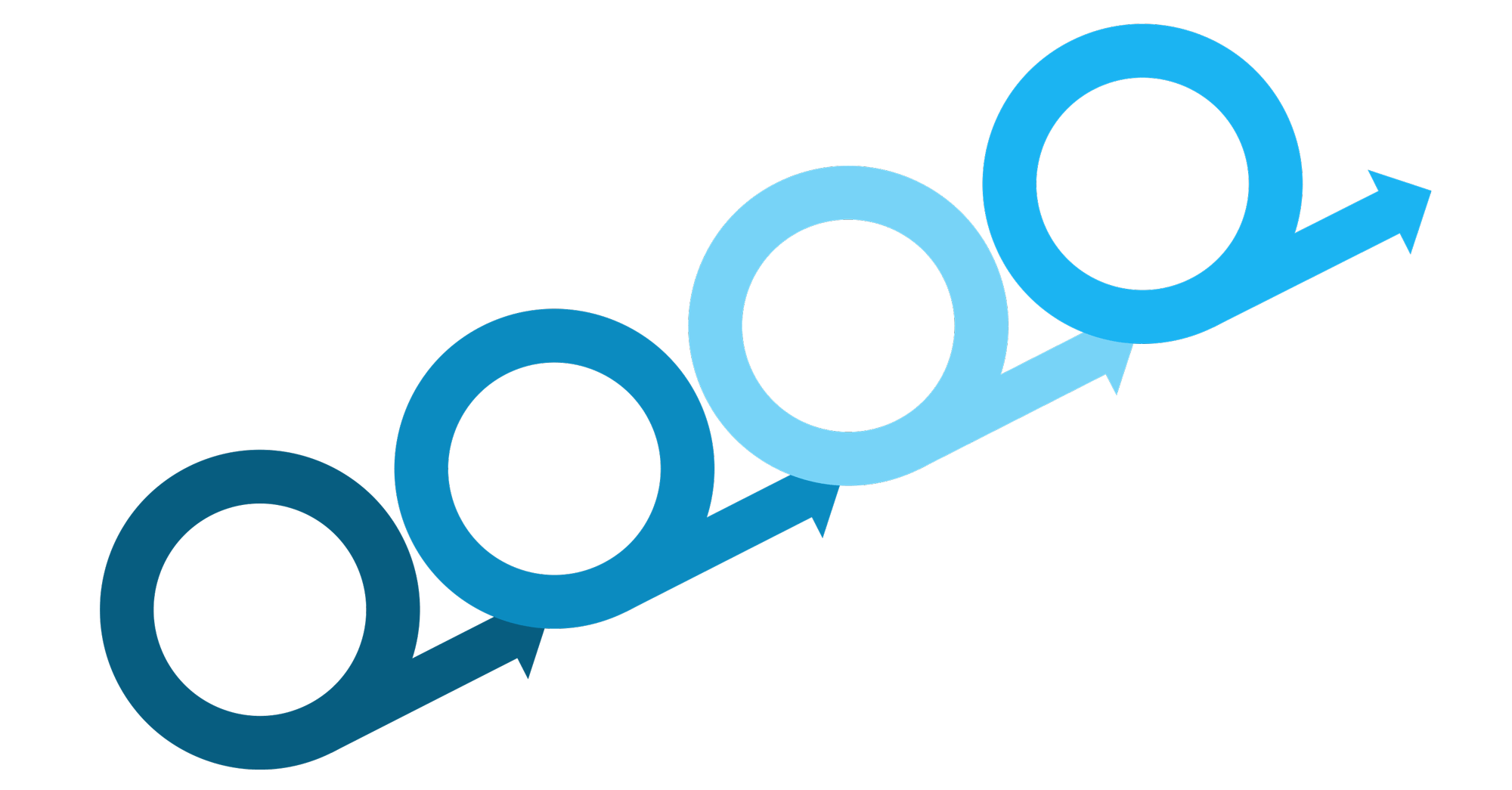

Case Study
Take the example of a P&C Insurance, to provide some context for how these kind of processes might operate in practice. As part of their strategy, they have a clear focus on customer happiness, and to reach that aim, they started out on a route to methodically uncover any potential frustrations or pain points customers may have by engaging the individuals on the frontlines of the business.
By systematically mapping out, prioritizing, and implementing as many of these ideas as feasible over time, the company has been able to dramatically enhance its position and become the clear industry leader with exceptional customer satisfaction, growth, and financial success.
5 Benefits of Continuous Improvement
Based on the Harvard Business Review article “What Do You Really Mean by Business “Transformation”?” by Scott Anthony (February 29, 2016), there are 3 fundamental kinds of transformation efforts that exist within organizations:
• Operational – this type of transformation is focused on doing what you are currently doing, better, faster, or cheaper. The essence of the organization isn’t changing, but efforts usually result in reduced costs, improved customer satisfaction, and higher quality products and services to name a few. Does this sound familiar? Well… it should if your organization has implemented performance improvement programs such as Lean and Six Sigma.
• Operational Model – this type of transformation is focused on doing what you currently do in a fundamentally different way. The article used Netflix as an example; they shifted from sending DVDs through the mail to streaming video content through the Web. At their core, they are still providing their customer’s entertainment, but have fundamentally changed how they provide that entertainment.
• Strategic – this type of transformation has the highest stakes but could have the most reward. It involves changing the very essence of an organization – Apple from computers to consumer gadgets or Amazon.com from retail to cloud computing.
Regardless of which of these types of transformation you are experiencing, continuous improvement is a mechanism to achieve transformation.
Benefit 1: More Engaged Workers
According to a Gallup study of American workers conducted in 2015, 32% of employees were engaged in their jobs. The poll also revealed that the majority of employees (50.8%) were “not engaged” and 17% were “actively disengaged.” The figures reveal a significant scope for development, as there are several financial and social benefits to having people who care about their work. According to a 2009 Towers Perrin study, organizations with highly engaged employees produced 19.2% greater operational income than their baseline peers.
This issue is directly addressed via a continuous improvement program. At its essence, continuous improvement aims to empower people to tackle problems that hinder them while steadily increasing the efficiency, safety, and effectiveness of their work processes. A continuous improvement culture communicates to employees the importance of their ideas. When an employee makes a suggestion for improvement, the concept can be thoroughly tested and, if successful, implemented throughout the organization. This shifts the employee’s role and responsibilities from passive actor to active participant in the organization’s success.
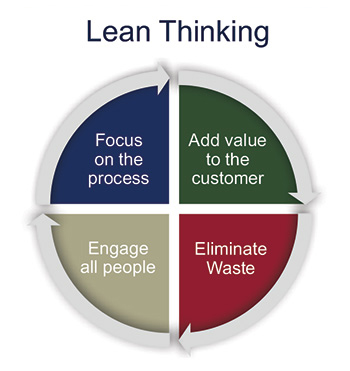
Benefit 2: Reduced Employee Turnover
Organizational turnover is quite costly. In addition to severance, the costs associated with searching, employing, and training a replacement for the position must be incurred. For many jobs, it can take several years of on-the-job training for a person to achieve the essential experience to excel at their work. Increased employee engagement and lower turnover rates have been linked to a culture of continuous improvement. Workers that actively contribute to the company’s improvement feel a sense of satisfaction and success. Additionally, people are invested and developed as critical thinkers and problem solvers, which benefit them in a wide variety of roles and positions. This often results in a stronger sense of belonging and fewer reasons to abandon the organization.
Benefit 3: More Competitive Products And Services
The improvement of processes and products is driven through continuous improvement. Businesses that constantly seek methods to improve their operations will invariably raise the value of their products and services. This will result in more sophisticated and economically competitive offerings.
Benefit 4: Improved Customer Service
Understanding what the customer values and working to offer that value are the first steps in providing excellent customer service. Continuous improvement gives a framework for identifying and reducing waste in the value delivery process. Organizations driven by continuous improvement are better equipped to align their products and services to latent customer values. This will result in products and services that “predict” customers’ requirements even before they are aware of them.
Benefit 5: Proactive Learning Culture
A learning organization includes systematic problem solving, experimentation with new approaches, learning from past experiences, learning from the best practices of others, and transferring knowledge quickly and efficiently throughout the organization. Instilling a continuous improvement culture helps an organization mature in these areas, resulting in a high level of trust and relationship with customers and suppliers, anticipating customer needs and exceeding expectations, designing out problems or catching problems at their source, proactive risk management processes, and reliable and consistent organizational processes.
In the modern workplace, information and technology quickly become obsolete. If business is done the same way as 5 or 10 years ago, it is highly likely the organization will fail rapidly. Employees and supervisors are challenged to go beyond their comfort zone in a culture of continual improvement but must be equipped to do so. The only way to get better is to attempt something new. That something new can be frightening at first and may be beyond the organization’s current competencies. The framework for achieving this next degree of excellence is provided by continuous improvement.
In the long run, building new competencies is the only way to establish and sustain a culture of continuous development. Organizations should invest in and challenge their staff to develop their skills and knowledge by adopting continuous improvement skills and mindsets. This enables the organization and its people to be prepared for the continuous change and challenges that will be presented in the short and long term.
Curriculum
Performance-Minded Leadership – Part 1- Year 1
- Part 1 Month 1 Improvement Strategy
- Part 1 Month 2 A3 Thinking
- Part 1 Month 3 Customer Value
- Part 1 Month 4 Process Thinking
- Part 1 Month 5 Leading via Learning
- Part 1 Month 6 Influential Leadership
- Part 1 Month 7 Tracking Performance
- Part 1 Month 8 Process Mapping
- Part 1 Month 9 Creating Connections
- Part 1 Month 10 Eliminating Waste
- Part 1 Month 11 Data Collection
- Part 1 Month 12 Data Analysis
Performance-Minded Leadership – Part 2- Year 2
- Part 2 Month 1 Root Cause Analysis
- Part 2 Month 2 Designing Improvements
- Part 2 Month 3 Implementing Change
- Part 2 Month 4 Consistent Operations
- Part 2 Month 5 Coaching Skills
- Part 2 Month 6 Storytelling
Program Objectives
The following list represents the Key Program Objectives (KPO) for the Appleton Greene Performance-Minded Leadership corporate training program.
Performance-Minded Leadership – Part 1- Year 1
- Part 1 Month 1 Improvement Strategy – Building and cultivating a culture of continuous improvement is essential for organizations to be resilient, adaptable, and to create problem solving capabilities. Senior leaders are at the forefront of driving a continuous improvement culture. In this workshop, participants will learn the basic principles of continuous improvement methods and how they can improve their organization’s performance. Participants will set the strategy for continuous improvement within their organization and align it with the broader short- and long-term goals and objectives. An effective continuous improvement initiative requires governance, supporting infrastructure, and standards of consistency. After this workshop participants will be able to develop a continuous improvement strategy and create the building blocks for operational governance, infrastructure, and standards to ensure its success.
- Part 1 Month 2 A3 Thinking – In order to remain resilient, adaptable, and meet the needs of customers, organizations need to build problem-solving capabilities. A critical aspect of problem solving is to apply a systematic approach that is repeatable and logical. A3 thinking provides leaders with an effective problem-solving methodology. It connects the problem, its root causes, goals, actions to achieve the goal, and the results in a natural and logical sequence. A3 thinking enables a consistent approach to be applied to a broad array of organizational problems. It also serves as a key tactic in storytelling, which is important for garnering support from leaders, key stakeholders, and to motivate others.
- Part 1 Month 3 Customer Value – To build a continuous improvement mindset, leaders and managers ought to have an outside-in perspective – whether in public or private, profit or not-for-profit environments, as organizations we exist to serve our customers. These customers can be external, or internal, such as another business unit, function, or department. Understanding customers’ needs, and how they have changed over time creates a ‘north star’ for setting goals and priorities throughout the organization. This workshop focuses participants on their customers by embarking on a multi-step process to identify customers, understand how they define value through data collection and analysis, and translate and prioritize customer needs into operational performance requirements. After this workshop, participants will have a clear sense of how they deliver value to their customers, be more engaged with their work, and have a foundation to enable performance improvement.
- Part 1 Month 4 Process Thinking – Organizations are a series of interconnected processes that link together systems, functions, departments, and people. Based on the functional design in organizations, people and teams get a limited view of how their work connects to value-driving activities and are unclear what happens before and after their engagement in the process. This workshop helps participants think of the organization as a larger system of interconnected processes. Participants will learn the definition of a process, its inputs and outputs, and common process measurements such as time/speed, quality, and cost. Upon workshop completion, participants will be able to identify key processes, their inputs and outputs, and define process measurements. Process thinking enables continuous improvement and increases teamwork, communication, and collaboration across the organization.
- Part 1 Month 5 Leading via Learning – A continuous improvement culture is built through strong leaders who question the status quo, advocate for change, and empower others to identify problems, their root causes, and implement sustainable solutions. This workshop moves participants from a traditional directive style of leadership – telling others where problems occur and how to solve them, to an inquisitive style of leadership. Participants will learn techniques to ask problem-solving questions, reflective questions, and questions to improve communication and teamwork. Equally important for leaders is to be effective listeners. Participants will learn active listening techniques such as focus, feedback, filtering, and silence. Participants will complete an active listening self-assessment to understand strengths and weaknesses and create a plan for improvement. After this workshop, participants will be equipped with the skills to ask powerful questions and be active listeners. Inquisitive leaders enable wise decision making, clarifying priorities, mature processing, and ultimately aid in growing a learning culture.
- Part 1 Month 6 Influential Leadership – Whether you are a people-leader with positional authority, or are driving change and improvement in your organization, influence is a critical attribute to possess and hone to grow as leaders. The ability to influence others is fundamental to getting others to follow, gaining support from others, motivating others towards a common goal, and much more. The essence of influence comes from adding value to others, not having formal authority. influence is a powerful tool both inside and outside of any organization. Learn to use it effectively to carry out tasks and achieve goals successfully. Mastering the art of influence is a powerful way of ensuring one’s own success.
- Part 1 Month 7 Tracking Performance – Leadership and managers are continuously working towards optimizing the responsiveness, throughput, quality, cost, and efficiency of its production and service systems. In building on the Process Thinking workshop, this workshop guides leadership, and managers to define key performance indicators (KPIs) for core processes with clear thresholds and accountabilities defined for performance. Participants will learn a tiered KPI approach to define KPIs at the enterprise level, business unit, departmental or functional, and team levels. Leading and lagging KPIs will be defined and linked across organizational levels. After this workshop, participants will have a tiered KPI model for their organization to allow for robust performance management practices. Using this model, leaders and managers can be proactive in understanding when they are likely to miss critical performance targets. This helps move from a firefighting culture to a problem-solving and problem preventative culture of learning.
- Part 1 Month 8 Process Mapping – To successfully problem solve, a solid understanding of current process performance is needed. While KPIs help to identify performance gaps, a detailed understanding of how work flows through the organization is also critical. This workshop teaches participants how to capture process knowledge via process mapping. Participants will build on their learnings from previous workshops to develop high-level and detailed process maps. Participants will learn various process mapping tools based on the desired level of understanding and purpose needed. After this workshop, participants can create a variety of process maps to facilitate easy communication, aide in understanding how processes truly work, identify gaps and areas for improvement, and serve as a guide for effective execution of core business processes.
- Part 1 Month 9 Creating Connections – Continuous improvement efforts are most successfully executed through a team-based approach. In his book The Advantage, Patrick Lencioni cites trust as the foundational element to building a truly cohesive team. It is critical for continuous improvement leaders to establish trust within their teams quickly to ensure productive problem-solving. This workshop will introduce participants to foundational elements of vulnerability-based trust including sincerity, transparency, and elevating strengths. Participants will complete a personal assessment and develop a plan for improving their ability to lead cohesive teams through vulnerability-based trust.
- Part 1 Month 10 Eliminating Waste A key component of A3 thinking is to create logical connections between a problem, its root causes, goals, actions to achieve the goal, and the results. A critical step in the A3 problem-solving process is to identify root causes of process problems by analyzing and assessing work activities for their efficiency and effectiveness. This workshop presents a framework to analyze work activities using the eight wastes of Lean – defects, overproduction, waiting, non-utilized resources, transportation, inventory, motion, and extra-processing. Waste categories are linked with KPIs to provide an objective quantification of waste. Participants will also learn the key drivers of waste – overburden and unevenness. After this workshop participants will have a basis for identifying and quantifying waste in processes.
- Part 1 Month 11 Data Collection – Organizations struggle to understand how to use the data that is collected, or whether the data being collected is relevant. Leaders and managers often use outdated data or lagging metrics which do not allow for an effective understanding of problems and opportunities. This workshop presents participants with a data collection process that begins with clarifying data collection goals, includes validating data collection methods, and incorporates the continued improvement of measurement consistency. Participants will apply a structured data collection process to safeguard from the risk of using incorrect, outdated, and irrelevant data leading to flawed decision making. Participants will leave this workshop with a repeatable process to collect relevant and accurate data for effective decision making.
- Part 1 Month 12 Data Analysis – Fundamental to the use of data to drive decisions is the ability to analyze and interpret it to make correct and effective decisions. In building on the Data Collection workshop, this workshop teaches participants how to first categorize data into data types including continuous (variables) data and attribute (discrete) data. Participants will understand basic graphical and statistical analysis techniques that are best suited to different types of data. The techniques presented will aid participants in trend analysis, problem scoping/narrowing, making comparisons, and assessing cause-effect relationships. Participants will create a data analysis plan to determine the purpose of and audience for the data to convey relevant and timely conclusions and insights.
Performance-Minded Leadership – Part 2- Year 2
- Part 2 Month 1 Root Cause Analysis – A key component of effective problem-solving is root cause analysis, which uncovers the root causes of problems, versus tackling symptoms. In this workshop, participants will learn qualitative and quantitative root cause analysis approaches, tools, and techniques to discover the underlying causes of problems. Participants will learn to assess cause and effect relationships with qualitative and quantitative methods. Participants will learn to utilize root cause analysis results to modify processes and system issues to improve performance.
- Part 2 Month 2 Designing Improvements – In building on the Root Cause Analysis workshop, participants will learn creative techniques such as brainstorming, reverse thinking, concept maps, and mind maps to identify a broad list of potential solutions to address prioritized root causes. Additionally, participants will learn how to apply structured decision-making methods to narrow a list of many potential solutions to a few that will be selected for implementation. By developing standard criteria, participants evaluate each solution option against the criteria to determine which solutions best meet the criteria. Alternatively, evaluating each solution against the benefit of implementing that solution and the effort to implement that solution also helps narrow down the solutions that will be implemented. After this workshop participants are equipped with solution ideation and prioritization techniques to design effective improvements.
- Part 2 Month 3 Implementing Change – In building on the Designing Improvements workshop, participants will design an implementation plan for the prioritized solutions to ensure successful implementation. Participants will learn the key components of an implementation plan including key tasks/activities, timelines, and resources/people. The implementation plan will be used to plan and oversee the implementation of solutions. Participants will also utilize a proactive risk assessment approach to identify, prioritize, and mitigate potential risks in the implementation before they occur. Risks will be assessed for severity and likelihood of occurrence quantitatively, which then allows for prioritization of mitigation actions. After this workshop participants will have a solid plan for implementing solutions that can be used to track progress and will have proactively mitigated risks during the implementation.
- Part 2 Month 4 Consistent Operations – People have a natural tendency to revert to what they know and are comfortable with. After process improvements are implemented, it is critical to develop mechanisms to ensure sustainment of the changes and improved performance levels. In this workshop participants will develop tactical methods to sustain process improvements. This includes developing standard work to guide people on the most efficient and effective way to perform work. Control plans outline key process metrics (KPIs) that are monitored to proactively observe process performance to ensure the improved level of performance is maintained. Visual management and controls are a collection of communication and organization strategies used to promote the quick visual exchange of information within a work area. The goal is to keep everyone informed and involved in the performance of the work area. After this workshop participants will develop tactical approaches to sustain change through standard work, control plans, and control plans.
- Part 2 Month 5 Coaching Skills – Coaching is critical in the ongoing enhancement of people’s skills, their potential, and, ultimately, the performance of the organization. This workshop equips participants with knowledge of the basic coaching process, active listening and effective questioning skills, and behaviors that will enhance their ability to formally or informally coach others within their organization. After this workshop participants will understand the difference between coaching, mentoring, and managing. They will learn the key coaching competencies and how coaching aligns with the leader’s role. Participants will learn the GROW coaching model to engage, motivate and drive performance.
- Part 2 Month 6 Storytelling – “When data and stories are used together, they resonate with audiences both intellectually and emotionally for a lasting effect, you need to persuade the rational brain but also resonate with the emotional brain.” — Psychologist Jennifer Aaker In this workshop participants will utilize A3 thinking to tell a story succinctly and visually for the purpose of information sharing, knowledge transfer, or decision-making in a creative and engaging manner. Participants will incorporate learnings from all previous workshops to strike the right balance between telling a story and presenting data. After this workshop participants will gain confidence in applying a systematic storytelling approach that is repeatable and tells a story logically.
Methodology
Performance-Minded Leadership
As organizations consider embracing the new, reviewing or revising the old to sustain in a post-COVID environment, having a continuous improvement strategy in place equips you for the unceasing change and uncertainty that lies ahead. Our organizations and its people need to keep adapting to ensure their sustainability.
In order to survive and thrive, it is critical to:
– Stay in tune with customer and stakeholders’ needs
– Clarify how value is created
– Solve problems systematically
– Create flexible and agile processes
– Develop people
The Performance-minded Leadership program will equip organizations and participants to:
– understand the continuous improvement framework
– link continuous improvement to the organizations strategic planning activities
– build the necessary governance and infrastructure to lead successful continuous improvement efforts
– develop transformational leadership behaviors and habits
– identify activities in the organization as processes
– develop and monitor key performance indicators (KPIs)
– collect, interpret, and analyze organizational data
– build and apply critical thinking and problem-solving skills
Continuous Improvement Methodologies
The Performance-minded Leadership program draws from widely used methods of continuous improvement such as Lean and Six Sigma. While the origins of these are from separate places and times, they have the following characteristics in common:
• Focus on the customer
• Process thinking
• Use of structured problem solving
• Fact-based decision making
• Incremental and breakthrough improvement
• Development and growth of people
Lean
Lean is a way of thinking about creating needed value with fewer resources and less waste. It is a set of management practices to improve efficiency and effectiveness by eliminating waste. The core principle of lean is to reduce and eliminate non-value adding activities and waste. Waste is defined as the performance of unnecessary work as a result of errors, poor organization, or communication.
Lean incorporates five key principles:
1. Value: activities that physically or functionally alter the product, customers will pay (or wait) for, and are done right the first time.
2. Value Stream: a set of one or more processes that create and deliver products to customers.
3. Flow: flow of materials/information/product seamlessly through the value stream.
4. Pull: produce only what is needed when it is needed; production is pulled by customer.
5. Seeking Perfection: complete elimination of waste such that all activities along value stream create value.
Six Sigma
Six Sigma is a philosophy and methodology that provides organizations tools to improve the capability of their business processes. This increase in performance and decrease in process variation helps lead to defect reduction and improvement in profits, employee morale, and quality of products or services. Adopting a lean six sigma culture as a small or midsize organization can assist stabilize your existing environment and produce a “north star” for what to concentrate on in the future. A lean organization concentrates on its essential operations to steadily increase customer value. Lean also offers an alternative business model. Instead of controlling markets and seizing control of consumers, it focuses on assisting customers in meeting their needs and keeping them. In order to develop and scale up new product and service solutions that match the shifting needs of our time, lean is more effective and efficient. It fosters agility and flexibility, two qualities that most people struggle to implement.
Techniques for Continuous Improvement
Now that we’ve established what the overall picture of continuous improvement looks like, it’s time to delve deeper into the details.
Here is a short list of tools, approaches, and practices that we or our customers have found valuable for supporting and facilitating continuous development.
PDCA
PDCA, often known as the Deming Cycle, is the most basic and widely used paradigm for continuous improvement.
Its origins can be traced back to the 17th century and the scientific method, but it was popularized by W. Edwards Deming, who is widely regarded as the founder of contemporary quality control. Since then, it has served as the foundation for many of the most prevalent quality standards, including those developed by the International Standardization Organization (ISO).
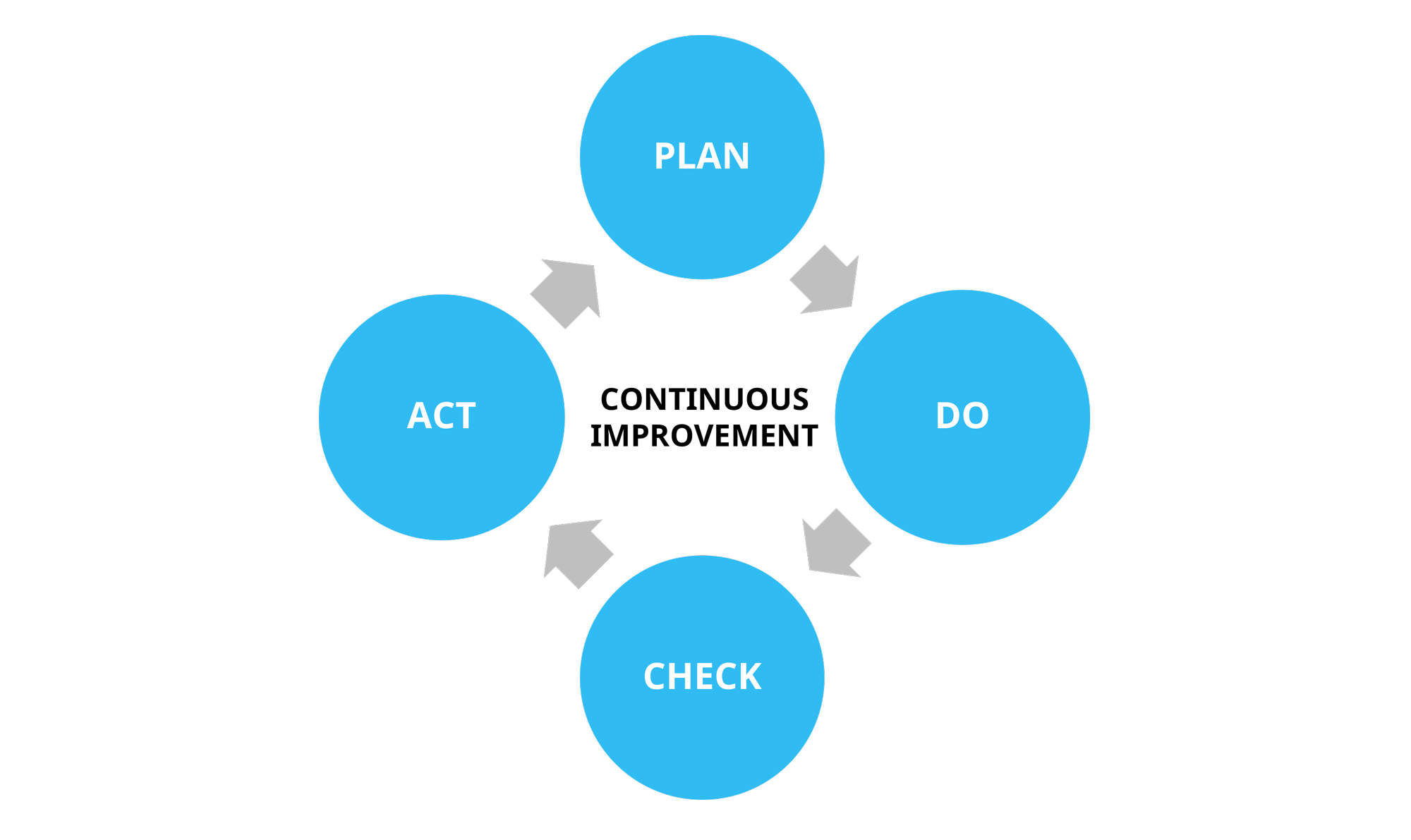
The acronym stands for Plan-Do-Check-Act, and the steps are self-explanatory once more. You begin with a plan, then implement it, evaluate its effectiveness, and act accordingly.
The true key to the PDCA approach is to repeat this cycle as many times as necessary until the problem is solved or the objective is accomplished.
The reason for this is that it’s often impossible to predict all of the consequences of a specific change in advance, so it’s simply best to avoid analysis paralysis and move on swiftly, then keep improving as you learn more.
DMAIC
DMAIC is a data-driven quality strategy used to improve processes. DMAIC is an acronym that stands for Define, Measure, Analyze, Improve, and Control and helps individuals and organizations identify a problem, evaluate the magnitude of the problem, analyze root causes, implement solutions, and interpret results and benefits. The five phases include:
• Define the problem, improvement activity, opportunity for improvement, the project goals, and customer (internal and external) requirements.
• Measure current process performance.
• Analyze the current process to determine root causes of variation, poor performance (defects).
• Improve process performance by addressing and eliminating the root causes.
• Control the improved process and future process performance.
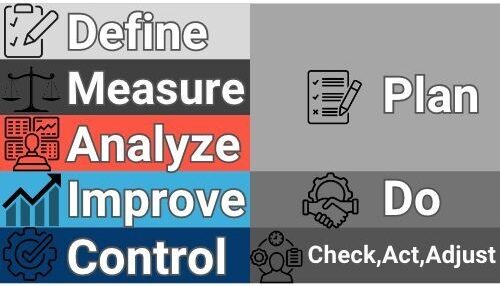
Kaizen
Kaizen is arguably the concept of continual improvement that is most frequently used. The name itself translates loosely as “positive change or betterment,” and it is more of an attitude than a precise process.
Kaizen, like most other continuous improvement methods, is cyclical in nature, as its name suggests. It can be executed using either the PDCA or DMAIC frameworks for problem solving.
The procedures are, for the most part, self-explanatory: you engage people to find problems, identify the most significant ones, develop solutions, test them, analyze the outcomes, keep what works and roll those positive changes out broadly, and then restart the cycle.
Yet, the key to success with the Kaizen comes from the renowned adage: “Every day, everywhere, and by everybody.”
It begins with engaging people across the organization to identify problems or possibilities for change, and then engaging them in the discussion to develop viable solutions to these challenges. After all, it is the employees on the frontlines of every organization that face these challenges every day, and management is rarely even aware of the majority of them, let alone recognize how common or critical a single issue is.
Not only will this assist you in resolving the right problems, but by involving the entire organization in the process, you will be able to overcome opposition to change and truly develop a culture that values change, improvement, and innovation.
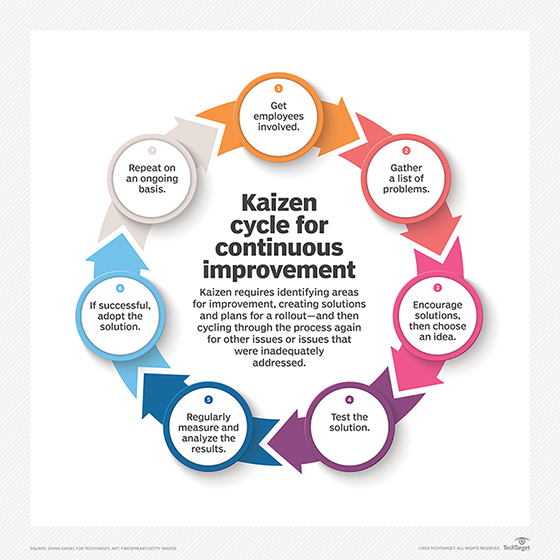
Evidence-based Decision Making
A critical component of continuous improvement is the application of evidence-based decision making. This style of decision making takes a non-judgemental approach through the collection and analysis of relevant data and observations of what is occurring in the process. Two common methods to achieve this include the development and use of KPIs (key performance indicators) and going to the Gemba (Gemba walks).
Key Performance Indicators
Peter Drucker famously said, “What gets measured gets done.” Measurement is an essential management tool, as it helps us determine if our work is making an impact, demonstrate value, manage resources, and focus improvement efforts.
Key Performance Indicators (KPIs) are the critical (key) quantifiable indicators of progress toward an intended result. KPIs provide a focus for strategic and operational improvement, create an analytical basis for decision making and help focus attention on what matters most. KPIs should have clear thresholds and accountabilities defined for performance.
By developing and analyzing KPIs, leaders and managers can be proactive in understanding when they are likely to miss critical performance targets. This helps move from a firefighting culture to a problem-solving and problem preventative culture of learning.
Go to the Gemba
Regular Gemba walks are one of the important approaches leaders should use to gather factual evidence on how work processes are executed, where waste exists, and solicit ideas for improvement by asking questions.
The term stems from the Japanese word Genba, which means “actual place.” Hence, a Gemba walk simply means that management travels to the frontlines of the organization where the work actually occurs, be it a manufacturing floor, emergency room, call center, or wherever value is being created.
These visits should be unscripted, and focused on learning what’s really going on, collect input from, and engage with employees rather than trying to direct better methods.
Gemba walks allow you to engage with employees on the front lines and establish a culture in which improvement and creativity thrive.
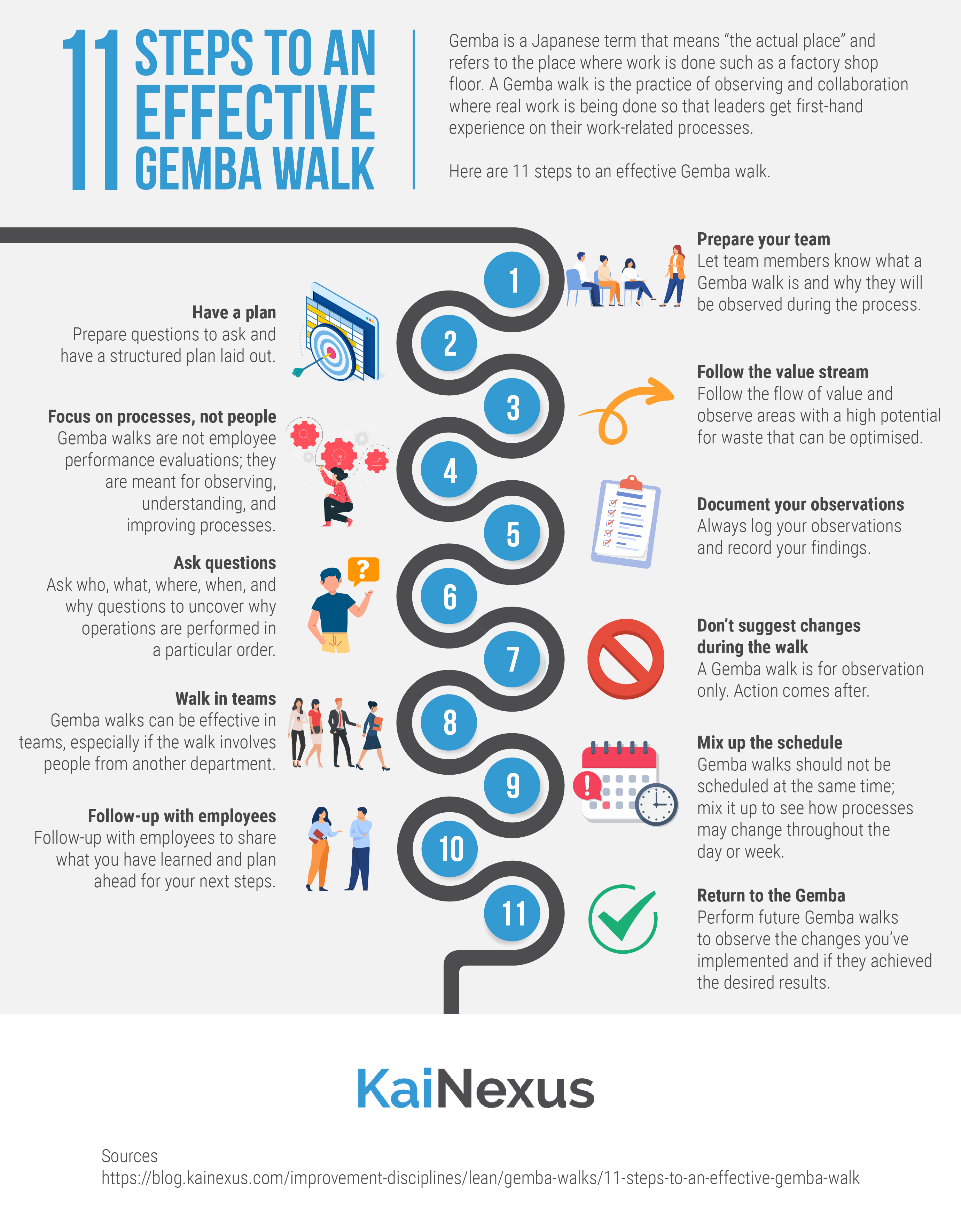

Why We Need Critical Thinking
Critical thinking is the ability to interpret, analyze, evaluate, explain, and find results in uncertain situations. Critical thinking skills are essential in navigating an organization. However, currently there is a critical thinking gap in the United States, and it comes from more than just a lack of learning. Whether addressing challenges within a corporation, improving operations, increasing value for customers, or reducing costs, organizations have an even stronger need for critical thinking now and into the future.
To solve complex problems that don’t have readily available or visible answers, you’ll need to be able to think critically if you want to succeed both personally and professionally. Unfortunately, critical thinking is not a skill that is formally taught in academia. Critical-thinking skills are highly valued by employers since they enable employees to make decisions on their own and without continual guidance.
A great way to build critical thinking skills is to participate in our carefully crafted continuous improvement training programs. These 18 training programs give a structured approach to developing and strengthening these skills. The objectives of these programs are as follows:
Improvement Strategy – Participants of this program will be able to develop a continuous improvement strategy and create the building blocks for operational governance, infrastructure, and standards to ensure its success.
A3 Thinking – A3 thinking provides leaders with an effective problem-solving methodology. It connects the problem, its root causes, goals, actions to achieve the goal, and the results in a natural and logical sequence.
Customer Value – To build a continuous improvement mindset, leaders and managers need to understand how they define value through data collection and analysis and translate and prioritize customer needs into operational performance requirements.
Process Thinking – Continuous improvement is made possible by process thinking, which also improves teamwork, communication, and collaboration. Here you will learn how to be able to identify key processes, their inputs and outputs, and define process measurements
Leading via Learning – To improve critical thinking leaders should learn techniques to ask problem-solving questions, reflective questions as well as active listening which is taught through this program.
Influential Leadership – Mastering the art of influence is a powerful way of ensuring one’s own success and growth as a leader. Learning how to use it effectively to carry out tasks and achieve goals successfully can help leaders improve their organization.
Tracking Performance – Using this model, leaders and managers can be proactive in understanding when they are likely to miss critical performance targets. This helps move from a firefighting culture to a problem-solving and problem preventative culture of learning.
Process Mapping – In order to problem solve effectively, understanding how processes work is vital. Learning the concept of process mapping will allow you to identify gaps and areas for improvement, and how to effectively execute solutions.
Creating Connections – It is critical for continuous improvement leaders to establish trust within their teams quickly to ensure productive problem-solving.
Eliminating Waste – This is one of the key elements of continuous learning. This program teaches how to identify and quantify waste in business processes and remove them to improve efficiency.
Data Collection – By learning how to collect relevant and accurate data will improve effective decision making for a corporation. Here you will learn the data collection process: clarifying data collection goals, validating data collection methods, and incorporating the continued improvement of measurement consistency.
Data Analysis – Data analysis is integrated in the continuous improvement cycle by understanding how to evaluate and understand data in order to make informed judgments is essential to the use of data to drive decision-making.
Roost Cause Analysis – In effective problem-solving learning how to discover the underlying causes of problems is essential. This process can be utilized to modify process and system issues to improve performance within your organization.
Designing Improvements – This will guide participants to be equipped with solution ideation and prioritization techniques to design effective improvements. Here is where you will learn how to create solution ideation and prioritization techniques to design effective improvements.
Implementing Change – In order to see results or improvement within your organization changes must be made. This course was created to teach leaders how to design an implementation plan for the prioritized solutions to ensure successful implementation.
Consistent Operations – Consistency is key when trying to sustain continuous improvement. This workshop was designed for participants to learn and develop tactical methods to sustain process improvements.
Coaching Skills – When in a leadership role it is your responsibility to coach others within your organization. Managers and leaders should take what they have learned in the other 17 training programs and pass the information they have learned on to their employees.
Storytelling – Storytelling is a critical thinking technique that teaches us to verbalize our interpretations and support them with evidence. It is also a skill needed in information sharing, knowledge transfer, and decision-making. Here is where you can learn how to do this in a creative and engaging manner.

Benefit of Training Programs
Effective training programs can benefit organizations and help employees advance their careers. Growth-oriented training, like our workshops, will equip your employees with the abilities and perspectives they need to be successful. They will also develop the skills necessary to take on more responsibility and improve their job performance. In each of these programs you will learn transferable skills that will build upon each other. Upon completion of these programs, participants will learn the basic principles of continuous improvement methods and how they can improve their organization’s performance. They will also gain a clear sense of how they deliver value to their customers, create a variety of process maps, and collect relevant and accurate data for effective decision making among many other transferable skills to improve business operations.
Continuous Improvement Training Programs
Companies should invest in training and development if they want to improve employee performance. An increase in productivity can be a product of well-organized and effective training programs, resulting in an improvement in critical thinking, problem solving, building trust, and establishing good communication.
Organizations need to keep adapting to ensure their sustainability. Building and cultivating a culture of continuous improvement is essential for organizations to be resilient, adaptable, and to create problem solving capabilities. With the right tools and training in place, you may find there is a large amount of untapped potential within your company that you can harness to help your company become their best version.
These 18 training programs are designed to help transform your organization from within. Many corporations feel that after they’ve implemented changes the job is over. Workflows may be made continually more efficient by using structured continuous improvement methods and tools. Our programs will help equip your organization maximize its improvement journey and sustain it.
Industries
This service is primarily available to the following industry sectors:

Financial Services
Financial services are the economic services provided by the finance industry, which encompasses a broad range of businesses that manage money, including credit unions, banks, credit-card companies, insurance companies, accountancy companies, consumer-finance companies, stock brokerages, investment funds, individual asset managers, and some government-sponsored enterprises.
The term “financial services” became more prevalent in the United States partly as a result of the Gramm–Leach–Bliley Act of the late 1990s, which enabled different types of companies operating in the U.S. financial services industry at that time to merge.
Companies usually have two distinct approaches to this new type of business. One approach would be a bank that simply buys an insurance company or an investment bank, keeps the original brands of the acquired firm, and adds the acquisition to its holding company simply to diversify its earnings. Outside the U.S. (e.g. Japan), non-financial services companies are permitted within the holding company. In this scenario, each company still looks independent and has its own customers, etc. In the other style, a bank would simply create its own insurance division or brokerage division and attempt to sell those products to its own existing customers, with incentives for combining all things with one company.
The road to a better future is rarely straight or easy to find.
For the last two years, the financial services industry has effectively navigated unprecedented levels of uncertainty. From real estate to insurance to investment management to banking and capital markets, financial services businesses around the world responded to the epidemic with amazing endurance and adaptability, assisting people, organizations, and governments in regaining their footing.
But it’s still a long way up. With a combination of near-term geopolitical and economic challenges—the war in Ukraine, inflation, supply chain disruptions, and the prospect of a regional or global recession—2023 promises to be a year in which additional regulation and transparency requirements become market realities.
How can executives in the financial services industry navigate the road ahead? Companies can use the lessons they’ve gained since 2020 to solve obstacles and identify opportunities, such as focusing on talent, technology, risk, regulation, and purpose. While some firms may choose to decrease costs, others may focus on smarter execution, identifying areas in which technology can be used to enhance value and create greater customer experiences. While some businesses may react defensively to ESG rules, doing only what is necessary, others will step up and take the lead, looking for opportunities to invest in people and the world.
The “new normal” could become completely visible in 2023. There will be chances to shape the future, one in which profits and purpose are closely connected. Leaders in the financial services business can be poised and ready to bring the industry forward.
Healthcare
The healthcare industry (also called the medical industry or health economy) is an aggregation and integration of sectors within the economic system that provides goods and services to treat patients with curative, preventive, rehabilitative, and palliative care. It includes the generation and commercialization of goods and services lending themselves to maintaining and re-establishing health. The modern healthcare industry includes three essential branches which are services, products, and finance, and may be divided into many sectors and categories and depends on the interdisciplinary teams of trained professionals and paraprofessionals to meet the health needs of individuals and populations.
The healthcare industry is one of the world’s largest and fastest-growing industries. Consuming over 10 percent of gross domestic product (GDP) of most developed nations, health care can form an enormous part of a country’s economy. U.S. healthcare spending grew 2.7 percent in 2021, reaching $4.3 trillion or $12,914 per person. As a share of the nation’s Gross Domestic Product, health spending accounted for 18.3 percent. The per capita expenditure on health and pharmaceuticals in OECD countries has steadily grown from a couple of hundred in the 1970s to an average of US$4’000 per year in current purchasing power parities
A healthcare provider is an institution (such as a hospital or clinic) or person (such as a physician, nurse, allied health professional or community health worker) that provides preventive, curative, promotional, rehabilitative or palliative care services in a systematic way to individuals, families or communities.
The World Health Organization estimates there are 9.2 million physicians, 19.4 million nurses and midwives, 1.9 million dentists and other dentistry personnel, 2.6 million pharmacists and other pharmaceutical personnel, and over 1.3 million community health workers worldwide, making the health care industry one of the largest segments of the workforce.
The medical industry is also supported by many professions that do not directly provide health care itself, but are part of the management and support of the health care system. The incomes of managers and administrators, underwriters, and medical malpractice attorneys, marketers, investors, and shareholders of for-profit services, all are attributable to health care costs.
In 2017, healthcare costs paid to hospitals, physicians, nursing homes, diagnostic laboratories, pharmacies, medical device manufacturers, and other components of the healthcare system, consumed 17.9 percent of the gross domestic product (GDP) of the United States, the largest of any country in the world. It is expected that the health share of the Gross domestic product (GDP) will continue its upward trend, reaching 19.9 percent of GDP by 2025. In 2001, for the OECD countries the average was 8.4 percent with the United States (13.9%), Switzerland (10.9%), and Germany (10.7%) being the top three. US health care expenditures totalled US$2.2 trillion in 2006. According to Health Affairs, US$7,498 be spent on every woman, man and child in the United States in 2007, 20 percent of all spending. Costs are projected to increase to $12,782 by 2016.
The government does not ensure all-inclusive health care to every one of its residents. However, certain freely supported healthcare programs help to accommodate a portion of people who are elderly, disabled, or poor. Elected law guarantees community to crisis benefits paying little respect to the capacity to pay. Those without health protection scope are relied upon to pay secretly for therapeutic administrations. Health protection is costly and hospital expenses are overwhelmingly the most well-known explanation behind individual liquidation in the United States.

Government
Government has evolved in a variety of ways over time to both lead and respond to the needs of populations. All governments, whether national, transnational, regional, or local, are concerned with six basic tasks. Examples include citizenship, justice, the social safety net and welfare state, service delivery, economic development and globalisation, risk and security.
They are all interwoven and, in some cases, can lead to policy contradictions. Population growth, for example, can be a critical engine of economic advancement, but it puts costs on the supply of services like health care and education, as well as on the welfare state. As a result, there are qualitative disagreements about which types of population growth should be encouraged to maximize benefits while reducing costs and the risk of societal instability.
As a result of worldwide competitiveness, globalisation brings pressure and accountability. This can be seen in education with the OECD’s PISA assessments of school systems and how the pressure to perform well in this international benchmark feeds through to specific curricular revisions. People want to know why their local services aren’t up to pace, thus international health benchmarks may both stimulate innovation and put political pressure on governments.
The government has grown into new policy areas over time. This has been spurred in part by public demand for inventive solutions to problems that necessitate government intervention, as well as decisions by governments to expand their regulatory jurisdiction into new areas. The development of international terrorism in recent decades, for example, has raised concerns about how to combat radicalization.
Data is increasingly being used to detect areas of underperformance, manage external contracts, and support communications in order to illustrate the value that a government gives to its residents. This is dramatically altering how government operates, but it also places a high priority on upskilling so that the huge government workforces can benefit from the massive insights provided by the data revolution. Most governments have failed to implement the agile, whole-of-government strategy required for today’s interrelated, rapidly evolving agenda and population demands.
In the long run, government IT projects have a dismal track record of being delivered on time and fulfilling the needs of staff and other stakeholders. This is not to downplay the challenges of operating on such a vast scale. Many government organizations, on the other hand, fail to cultivate a high-performance work culture, which impacts service and policy delivery.
While the government is in charge of setting a country’s climate policy, governments must aim to be more sustainable in their operations. There are several reasons for this, including the need to model positive behaviors, enormous pressures from various segments of the population to move harder and faster toward sustainable practices, and opportunities to deliver services in novel ways that have the potential to improve quality while also lowering costs by rethinking how things should be done.
Government trust soared at the start of the pandemic but has since fallen, exacerbated by misinformation. The cause of the reaction is better and more efficient delivery, which performs a better job of listening to concerns and delivering policy responses that address those issues. Governments have had to intervene to help economies recover from the great shock of the epidemic, resulting in an increase in the size of the state in relation to GDP across all developed economies in the last few years. General government spending as a proportion of GDP in the United Kingdom has climbed to 51.5 percent, compared to 48 percent in the United States and the Netherlands. Italy’s government spending as a share of GDP is far higher, at 57 percent.
The government’s finances have been severely strained since the financial crisis, which has been exacerbated by the pandemic. Balance sheets are under pressure to be repaired, but this cannot be done only through austerity; taxation arrangements must be changed, and both domestic and foreign tax loopholes must be closed.
Economic development is the most effective way to repair public finances, and green and sustainable investments have enormous potential to create a new generation of skilled jobs. Improved coordination of employment and education to stimulate skill development throughout one’s life will promote not only economic growth, but also social mobility and equality. This means that culture war debates will receive less attention.
The epidemic has accelerated long-standing trends, such as a shift away from traditional shopping and an increase in working from home. Local communities are being affected, but it does not have to be a tragedy. Many more wealthy communities have seen a resurgence as a result of these characteristics. Regrettably, poorer regions have seen an increase in the loss of services and facilities. The issue is determining how to revitalize these places in the long run. Investing in obsolete solutions will not fix the problem; instead, new ideas must be developed.
Insurance
The insurance market has transitioned from low inflation, low interest rates, and global integration to rising inflation, higher interest rates, and growing protectionism.
Core inflation is expected to peak in late 2022 and begin rapidly decreasing in 2023. Weaker global activity, a housing market correction in many places, relieving supply chain pressures, more tightening of monetary policy around the world, and the deflationary effects of a potential global recession will all contribute to this acceleration.
The effects of inflation will differ depending on the industry. Inflation-driven increases in claims expenses (e.g., repairs, replacement parts, labor) will be especially problematic for property and casualty (P&C) insurers in the United States, where regulators have been resisting rate hikes. The short-tail structure of insurance products in many countries in the Asia-Pacific region allows insurers increased opportunity to reprice policies fast, thus correcting for inflation and partially compensating for depleted reserves. Life insurance businesses are cautiously optimistic, as higher interest rates today appear to offset the impact of inflation.
While inflation and recession will affect insurers by increasing claims costs and decreasing demand, rising interest rates may create an earnings tailwind due to greater investment returns. Yet, those returns will necessitate bold decisions, cautious hedging, and prompt adjustments to asset and liability management plans. Insurers must monitor a variety of measures, including liquidity and asset valuations, and be prepared to alter asset and liability management (ALM) strategies in response to market developments.
Geopolitical tensions have escalated significantly in recent years. The Ukraine conflict has had the greatest influence on geopolitical relations since the Cold War. As a result, business leaders must take geopolitical concerns into account when making strategic decisions and allocating resources.
“War exclusions” may minimize claim losses, although this is far from certain, particularly in the context of cyber and policies meant to cover political risk. Price rises are expected to have the largest impact on the marine, aviation, and transportation (MAT) industries. Political risk and trade credit insurance underwriting will likewise become much more careful. Growing volumes of state-sponsored cyber attacks are another important risk vector that top insurance executives are keeping an eye on, primarily because their commercial customers may be affected.
Most insurance companies have shown extraordinary flexibility and endurance in weathering a slew of challenges in recent years, particularly the impact of the pandemic and the economic ramifications from the Russia-Ukraine crisis. Systems and capacities were enhanced, and agile talent and technology initiatives were successful. So, is the sector prepared for new problems in 2023 (and beyond)? Rising inflation, interest rates, and loss costs; looming concerns of recession, climate change, and geopolitical upheaval; and competition from InsurTechs and even noninsurance businesses like e-tailers and manufacturers, to mention a few. This is not the time for carriers to be content with the changes they’ve had to make.
Instead, companies should build on their success to sustain a continual culture of innovation while making customer-centricity the focal point of the industry’s standard operating model. According to our findings, they should begin shifting their focus from basic operational transformation—such as cloud migration—to fully realizing the value and benefits of infrastructure and technological upgrades; shift from responding to the requirements of regulators and other industry overseers to more proactively anticipating and meeting distributor and policyholder expectations; and broaden their historical focus from risk and cost reduction to prioritized risk management.
Medical Device
Medical devices are pieces of equipment that aid and support medical practitioners and professionals in a variety of medical processes. They frequently assist medical caretakers with the ability to diagnose and treat patients by incorporating additional mechanical and visual utilities. Their primary function is to improve the patient’s quality of life and assist them in overcoming a certain illness or disease.
Because medical devices are frequently used in life-or-death circumstances, they are rigorously reviewed by organizations all over the world in order to meet worldwide safety standards. As a result, the more critical the device’s capabilities are, the more testing it undergoes before being certified for use.
Primary Research’s Most Important Findings
• According to the report, the Medical Device market share is expected to increase at a CAGR of roughly 5% between 2021 and 2026.
• The Medical Device market was worth roughly $471 billion in 2020 and is expected to reach approximately $623 billion by 2026. The market is expected to expand significantly as a result of a number of driving forces.
• The global market for medical devices is being driven primarily by increased industry investment and more flexible medical laws for testing and approval of these products.
• Due to the increased prevalence of chronic and infectious diseases such as cancer, diabetes, and HIV/AIDS, the in-vitro diagnostics (IVD) sector is expected to hold the largest market share throughout the projected period.
• In terms of end-users, hospitals and clinics are expected to have the biggest market share throughout the projected period, owing to the rising presence of multispecialty and community hospitals around the world.
• By geography, North America will have the largest market share during the forecast period.
Factors Influencing Industry Growth
Increased rounds of investment by public and government entities around the world, as well as decreased regulations on these devices, are the key driving forces responsible for the expansion of the medical device market.
Other variables such as a broader choice of products being approved, the most recent integrated features, and increased marketing will boost the global medical device market to greater heights. Also, there has been a significant decrease in the number of persons skipping routine clinical visits, which is predicted to increase medical equipment sales. The present trend indicates an increase in interest in the wearable medical sector, which will open up new revenue streams for the market throughout the projection period.
Market Segmentation for Medical Devices
The worldwide medical device market may be classified into orthopedic devices, cardiovascular devices, diagnostic imaging, IVD, MIS, wound management, diabetic care, ophthalmology, dentistry, nephrology & urology, general surgery, and others based on device type (dental equipment & supplies, patient monitoring devices, anesthesia & respiratory devices). Because of the rising frequency of chronic and infectious diseases, the IVD category is predicted to have the biggest market share at the start of the forecast.
The global medical device market may be divided into three segments based on end-users: homecare, hospitals & clinics, and diagnostic centers. Due to a greater physical presence of hospitals in the region in the form of multispecialty and community-based hospitals, hospitals and clinics are predicted to have the biggest market share at the start of the projection. Furthermore, increased healthcare expenditures and government programs based on reimbursements will aid in enhancing market expansion across a broader footprint.
Because of global revenue collection, North America is predicted to have the greatest market share at the start of the forecast. According to recent trends, the market will account for more than 30% of total global sales.
The presence of significant players in the area, strong healthcare infrastructure, quick acceptance of sophisticated medical technologies, and favorable legislation surrounding the clearance of these devices will all contribute to the market’s dominance over the projected period. During the forecast period, Europe is expected to have the fastest growing CAGR.
Locations
This service is primarily available within the following locations:

Raleigh NC
Raleigh, named for Sir Walter Raleigh, is the capital city in North Carolina. With a 2020 population of 483,579, Raleigh is the second-largest city in the state and currently ranks as the 41st largest city in the United States. Raleigh’s growing economy benefiting retail shopping, distribution, manufacturing, and service industries attracts many European immigrants. Considering Raleigh is the state’s capital, government and education are two key parts of the city’s economy.
The technological and environmental businesses in this city have also been growing as Raleigh has increasingly focused on green technology. This technology can be used to improve the transportation and infrastructure industries within the city.
Companies in the area have also worked with schools and research universities to improve products and machinery which has helped grow the city’s manufacturing sector.
People have been relocating to Raleigh at a rate of 48 new people a day. This population influx will also lead to an increase in the real estate market. It is likely to predict that Raleigh’s population will continue to grow with more diverse and well-educated individuals.
In addition to the growing manufacturing, retail, government, and education segments Raleigh’s technology and research market segments will aid in the future growth of the city. This growth is supported by the Research Triangle Region in Raleigh.
The construction industry in the city is also one aiding in the future growth of the area.
In addition to the new constructions projected to go up in Raleigh their current business is here to stay. The transportation community in Raleigh is projected to continue being a hot spot for retail shipping and wholesale distribution opportunities. Insurance companies who currently house their offices in this city are projected to stay in the area. Manufacturing companies in the communication, electronic, and food sectors are believed to remain in the city long-term and provide continuous construction opportunities.
Raleigh’s industrial base includes financial services, electrical, medical, electronic and telecommunications equipment, clothing and apparel, food processing, paper products, and pharmaceuticals. Raleigh is part of North Carolina’s Research Triangle, one of the country’s largest and most successful research parks, and a major center in the United States for high-tech and biotech research, as well as advanced textile development. The city is a major retail shipping point for eastern North Carolina and a wholesale distributing point for the grocery industry.
The healthcare and pharmaceutical industry has experienced major growth in recent years with many companies based in Raleigh including PRA Health Sciences, Chiesi USA (subsidiary of Chiesi Farmaceutici), formerly Mallinckrodt prior to tax evasion with Ireland, MAKO Surgical Corp., Metabolon, Inc., TearScience, and American Board of Anesthesiology.
Raleigh was number one on the 2015 Forbes list of the best place for businesses and careers. Companies based in Raleigh include Advance Auto Parts, Bandwidth, Truist Financial, Building Materials Holding Corporation, Capitol Broadcasting Company, Carquest, First Citizens BancShares, Golden Corral, Martin Marietta Materials, PRA Health Sciences, Red Hat, Vontier, Waste Industries, and Lulu.

Charlotte NC
As the second-largest banking center in the country, Charlotte has developed into a significant U.S. financial hub (after New York). The city is home to Bank of America, the second-largest financial institution in the country by assets. Wells Fargo, Bank of America, Lowe’s, Nucor (a maker of steel), Duke Energy, Sonic Automotive, Family Dollar, Goodrich Corporation, SPX Corporation, Domtar, and Chiquita Brands International are the ten Fortune 500 firms with the highest rankings in Charlotte.
Charlotte is the second-largest banking center in the United States, after New York City. The nation’s second largest financial institution by total assets, Bank of America, calls the city home. It is also home to the nation’s sixth largest financial institution, Truist, formed from the merger of BB&T and SunTrust in 2019. The city was also the former corporate home of Wachovia until its 2008 acquisition by Wells Fargo; Wells Fargo integrated legacy Wachovia, with the two banks fully merged at the end of 2011, which included transitioning all of the Wachovia branches in the Carolinas to Wells Fargo branches by October 2011. Since then, Charlotte has become the regional headquarters for East Coast operations of Wells Fargo, which is headquartered in San Francisco, California. Charlotte also serves as the headquarters for Wells Fargo’s capital markets activities. Bank of America’s headquarters, along with other regional banking and financial services companies, are located primarily in the Uptown central business district.
Charlotte also operates major offices for other large companies Microsoft and Centene Corporation also operate their East Coast headquarters in Charlotte. In November 2018, Honeywell moved its corporate headquarters to Charlotte. In June 2019, Lowe’s announced it will be building its Lowe’s Global Technology Center worth $153 million, which is set to be complete in 2021 and will be headquartered in South End neighborhood in Charlotte. In 2019, Dole Food Company relocated its headquarters to Charlotte from California, and expanded its presence in Charlotte with its merger with Ireland-based Total Produce in February 2021. On May 25, 2021, it was announced that Charlotte would become the East Coast headquarters of Credit Karma. Cedar Fair’s corporate office is located in southwest Charlotte. On September 20, 2022, the Atlantic Coast Conference (ACC) announced it will be relocating its headquarters from nearby Greensboro to Charlotte in 2023.
Serving as a significant hot spot for American racing, Charlotte is home to the NASCAR Hall of Fame and other NASCAR headquarters. AREVA, Babcock and Wilcox, Duke Energy, Electric Power Research Institute, Fluor, Metso Power, Piedmont Natural Gas, Siemens Energy, Shaw Group, Toshiba, URS Corp., and Westinghouse are among the major energy companies with operations in Charlotte. The Energy Production and Infrastructure Center (EPIC), which is part of the University of North Carolina at Charlotte, is known for its work in the fields of energy education and research. The area currently has 1.5 million jobs generating over $185 billion in the city’s revenue every month. Also every month the city sees an increase of around 3,000 people moving into the area. This rapid growth can be attributed to successful industries in the city. For example the health care, manufacturing, technology, and financial service industries. These industries have done so well because of Charlotte’s location, infrastructure, and educated individuals available for work.

Atlanta GA
The eighth-largest economy in the nation and the 17th-largest in the globe both reside in the Atlanta metropolitan region. A significant amount of Atlanta’s economy is made up of corporate operations, and numerous firms have their regional, national, or international headquarters in the city. Atlanta is home to The Coca-Cola Company, The Home Depot, Delta Air Lines, AT&T Mobility, UPS, and Newell-Rubbermaid, as well as having the third-highest concentration of Fortune 500 companies in the nation. Around 1,250 multinational organizations have offices in the Atlanta metropolitan area, where more than 75% of Fortune 1000 companies have business activities. Because of Atlanta’s educated workforce, which comprises approximately 43% of the city’s adults, many firms choose to locate there.
At Hartsfield-Jackson Atlanta International Airport, which it runs, Delta Air Lines, the third-largest employer in the metro region and the city, manages the biggest airline hub in the world in terms of both passenger volume and aircraft operations. Atlanta is currently responsible for producing about 65% of the state’s GDP making it the economic and cultural capital of the Southeastern part of the United States. The most profitable business segment in this city is its financial technology sector. The media has a significant role in Atlanta’s economy. The city is a significant hub for cable television programming. Atlanta’s economic output has shifted more toward the information technology industry, which also encompasses publishing, software development, entertainment, and data processing. Atlanta is home to the fourth-highest number of information technology positions in the country.
The largest manufacturing industries in the city include aircraft, automobiles, electronics, paper products as well as food and beverage. The main service providers in this city are printing, publishing, technology services, governmental services, banking, and insurance.

Washington DC
The economy of Washington is expanding and diverse, with a rising proportion of jobs in the professional and business services sectors. In order to keep up with the climbing population, construction in Washington has been a very busy industry. The federal government, health care, higher education, retail, and technology are also all key players in Washington’s economy. The Federal Reserve Board and Federal Deposit Insurance Corporation are two primary financial corporations fueling the economy by promoting financial sustainability, creating jobs, and improving productivity.
The Washington Metropolitan Area has the fourth-largest metropolitan economy in the US based on its gross domestic output. In Washington, D.C., the federal government was responsible for around 29% of the jobs. Because the federal government continues to function even during recessions, this is supposed to immunize Washington against national economic downturns. To be close to the federal government, many organizations, including law firms, independent contractors (defense and civilian), non-profits, lobbying companies, trade unions, industry trade groups, and professional associations, establish their headquarters in or around Washington, D.C. Washington’s second-largest industry is tourism. Each year, 18.9 million tourists contribute to the regional economy. Nearly 200 foreign embassies as well as global institutions including the World Bank, the International Monetary Fund (IMF), the Organization of American States, the Inter-American Development Bank, and the Pan American Health Organization are also located in the District. The District has expanding enterprises outside of government, particularly in the fields of finance, public policy, science, and education. The top five non-government employers in the city are Georgetown University, George Washington University, Washington Hospital Center, Children’s National Medical Center, and Howard University. The District is also home to the headquarters of four of the 500 biggest firms in the nation.
Dallas TX
One of the greatest concentrations of corporate headquarters for publicly listed corporations in the US is found in the Dallas-Fort Worth Metroplex. The economy in Dallas, Texas is fueled by its business, finance, and health services. The city is home to major banking, trade, and financial businesses. Telecommunication companies in Dallas are also some of the largest in the United States. The top high-technology fields are software production, computer services, and computer hardware manufacturers. Twenty Fortune 500 firms are located in the DFW region, including 12 in the city of Dallas. Dallas is home to the corporate headquarters of AT&T and Comerica Bank. Four Fortune 500 firms have their headquarters in Irving, including the second-largest by sales and some of the most profitable corporations in the world, ExxonMobil, Kimberly-Clark, Fluor (engineering), and Commercial Metals. Southwest Airlines, American Airlines, RadioShack, Neiman Marcus, 7-Eleven, Brinker International, AMS Pictures, id Software, ENSCO Offshore Drilling, Mary Kay Cosmetics, Chuck E. Cheese’s, Zales, and Fossil are more corporations with headquarters in the Metroplex. Corporate headquarters in the northern suburb of Plano include HP Enterprise Services, Frito Lay, Dr. Pepper Snapple Group, and JCPenney. Many of these companies – and others throughout the DFW metroplex – comprise the Dallas Regional Chamber. With more people populating the city, Dallas, Texas is anticipating a future job growth of 45.1% over the next ten years, which is higher than the United States average. Dallas added the most jobs of any other metropolitan area. In addition to there being more job opportunities for the people of Dallas wages and salaries are expected to rise as well. Production output in Dallas is estimated at $73.5 billion. This growth is expected to reach across all business segments, especially in industrial sectors, financial enterprises, and trading.
Program Benefits
Human Resources
- Learning
- Employee Growth
- Increased Motivation
- Buy-In
- Full Potential
- Collaboration
- Skill Development
- Goal Setting
- Accountability
- Improved Feedback
Management
- Decision-Making
- Shared Responsibility
- Collective Goals
- Improved Communication
- Collective Leadership
- Sustainability
- Process Identification
- Data Analysis
- Critical Thinking
- Continuous Improvement
Production
- Stakeholder Needs
- Value Identification
- Improved Processes
- Agility
- People Development
- Improved Framework
- Strategic Planning
- Develop KPI’s
- Governance
- Strong Infrastructure
Testimonials

U.S. Department of Veterans Administration – Acquisition Academy
“I liked everything about this training. I like the instructor’s approach. If a student did not understand the material presented in the original way, she presented it in another way. If the student still did not understand, she tried a third approach until the student understood. She was patient and kind.”
“The instructor, Ms. Sherwood, was OUTSTANDING!”
“The instructor clearly knows what she is talking about and has many relevant examples to share with us.”
AeroVironment
“The instructor was enthusiastic and knowledgeable.”

ARYZTA
“Ms. Sherwood is a great instructor; she interacts great with employees.”
“The course was very interactive and realistic.”
Nationwide
“Created an atmosphere of trust.”
“Ms. Sherwood’s technical expertise and best practice sharing was amazing.”
“Ms. Sherwood did such a great job of supporting me, I could not have done this without her. There were many situations where I felt overwhelmed but after working with Ms. Sherwood in our coaching sessions I always felt much better, more motivated, and better prepared to continue my project each time we met. She was fantastic in helping me hone my skills.”
“Ms. Sherwood was always very thoughtful with her responses and I could tell she really was listening and focusing on how to help me get better with every answer.”
“I always felt respected and there was a great feeling of collaboration working with Ms. Sherwood.”
“Ms. Sherwood’s technical expertise and best practice sharing was amazing.”
More detailed achievements, references and testimonials are confidentially available to clients upon request.
Client Telephone Conference (CTC)
If you have any questions or if you would like to arrange a Client Telephone Conference (CTC) to discuss this particular Unique Consulting Service Proposition (UCSP) in more detail, please CLICK HERE.

















